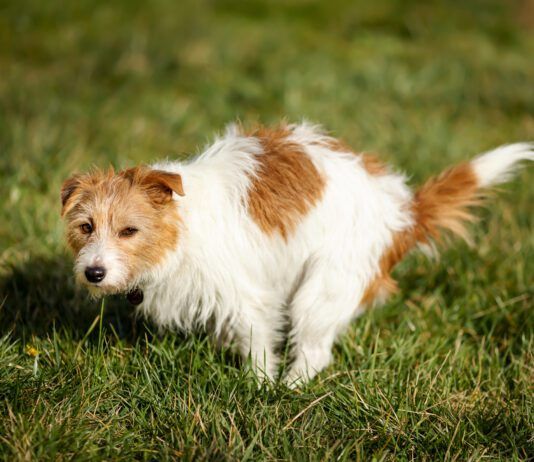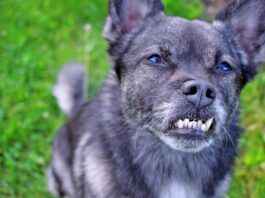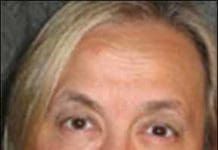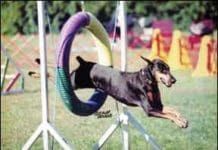A Study of Breed-Related Causes of Death in Dogs
A new 20-year retrospective study from the University of Georgia examined causes of death in dogs between 1984 and 2004. Researchers looked at records of 74,566 dogs from the Veterinary Medical Database, which includes data from 27 veterinary teaching hospitals. These results may be biased toward more severe, complicated, or unusual causes than the general dog population, but are fascinating nonetheless. The study grouped deaths by organ system and by disease category (“pathophysiological process”), and analyzed results based on age, breed, and average breed size. Eighty-two breeds with at least 100 representatives were included in breed-based analyses; mixed-breed dogs were considered as one group.
Bad News for Dog Owners Looking for Single-Antigen Vaccines
I have always run titers on my dogs before vaccinating and my vet provided individual doses when required. This year was different. The office manager called and said their practice could no longer provide individual vaccines, as in the past. I vaccinate only for parvo, distemper when titers are low, and rabies. I was quite upset because one of my dogs needed only distemper and my other dog’s titers were good. I posed the question, “Why offer titers, if you are not able to provide individual vaccines? Big silence! Well, I know the answer.
Canine Allergies: Most Common Causes, Best Tests, and Effective Treatments
Maybe this has happened to you: Youre reading or watching TV or at your computer, and your dog is lying on the carpet near you. Youre absorbed in what you are doing, but all of a sudden, you realize that your dog is licking or chewing himself, or scratching his ear with a hind paw. Hey! you say to your dog. Stop that! Your dog stops, looks at you, and wags his tail. You go back to doing what you were doing and a few minutes later, you hear the tell-tale sounds of licking or chewing or scratching again. Every dog does a certain amount of self-grooming to keep himself clean and every dog owner should be aware of how much is normal, and how much is too much, because too much is often the first indication that a dog is having an allergy attack.
It’s OK to Get a Second Opinion Before Putting Your Dog Through Surgery
Your dog is limping and you don’t know why, so you take him to your veterinarian. The vet pushes, pulls, and palpates and announces that your dog probably has torn ligaments in his knee. She says that he needs surgery, and she can take care of that. While you love your dog’s vet, you’re just not sure that you agree, and you’re also unsure whether surgery is the route you want to take. You feel uncomfortable thinking the thought, but wonder what another veterinarian might recommend.
A Canine Allergy Glossary
An Allergen is defined as a substance that causes an allergic reaction. Anything can be an allergen to a hypersensitive individual, even water. The term has meaning only in relation to an individual who is hypersensitive to that substance.
When It Comes to Allergy Tests, Some Dogs Flunk
There are a few different types of tests available that purport to identify the allergens to which a dog is hypersensitive; some of them are helpful, and some are a waste of time and money. Since all of them are commonly referred to as allergy tests
Food Elimination Trial: A Valuable Tool (When Done Correctly)
A valid food elimination trial for the purpose of confirming food hypersensitivity consists of three phases: elimination, challenge, and provocation. In the first (elimination) phase, the dog is fed a diet consisting of a single protein source and a single carbohydrate source. Both of these ingredients should be completely “novel” to the dog – foods he’s never eaten before. (Thirty years ago, lamb and rice was the go-to food elimination diet, because those ingredients were not yet widely available in commercial pet foods. Because the diet was novel, few dogs had developed allergies to those ingredients, and “lamb and rice” gained an unearned reputation as a “hypoallergenic” diet.
New Treatment for Pituitary-Dependent Cushing’s Disease
A surgical procedure used on humans to remove brain tumors that cause Cushing’s disease is now becoming available to dogs, thanks to collaboration between a human neurosurgeon, a veterinary endocrinologist, and a veterinary surgeon in the Los Angeles area.Cushing’s disease (hyperadrenocorticism, or HAC) is an adrenal disorder common in middle-aged and older dogs, affecting an estimated 100,000 dogs per year in the U.S. It occurs when the body produces too much cortisol, causing increased appetite and thirst, skin problems, and muscle weakness. Cushing’s can also predispose dogs to other conditions such as diabetes, pancreatitis, and infections.
Orthopedic Equipment for Dogs Designed for Increased Mobility and Extra Support
Do you have a dog recovering from orthopedic or neurologic surgery, one who has mobility issues, or a senior dog who has arthritis? If so, at some point, you have probably wished you could do something anything! to help make your dog's life (and your own) a little easier. I asked two veterinarians who specialize in canine rehabilitation to share some of their top picks for canine assistive/rehabilitative equipment. Laurie McCauley, DVM, CCRT, is founder and medical director of TOPS Veterinary Rehabilitation in Grayslake, Illinois, and is considered one of the pioneers in the field of veterinary rehabilitation. Evelyn Orenbuch, DVM, CAVCA, CCRT, recently opened Georgia Veterinary Rehabilitation, Fitness and Pain Management in Marietta, Georgia, and has focused on veterinary rehab medicine since 2003.
Blood Transfusions for Dogs
Denise Mankin, DVM, was on duty late one night in a Des Moines, Iowa, emergency veterinary clinic when Yeller, a Labrador Retriever, was rushed in sporting a fresh wound to his back. Yeller had been shot after escaping from his rural home. After stabilizing Yeller with IV fluids, antibiotics, and pain medications, Mankin opened up the dog's abdomen to find blood filling his abdominal cavity. A bullet had perforated Yeller's small intestine in five different locations, and two of the sites were hemorrhaging profusely. Within moments, his blood pressure plummeted. As Mankin worked desperately to tie off the blood supply to his damaged bowel, Yeller went into cardiac arrest. Cardiac drugs restored Yeller's heart beat, and donor blood, having been warmed for transfusion, was pumped into him.
An Update on “Low Uric Acid” Dalmatians
A few months ago, I wrote about the British Kennel Club’s registration of two special Dalmatians over the objections of the breed clubs there (Whole Dog Journal June 2010). These two dogs were the result of a breeding project begun in 1973, in which a single outcross to a Pointer was made in order to reintroduce the normal gene for uric acid back into the Dalmatian bloodline.
Dog Ovariectomy: A Safer Way to Spay Your Puppy?
Making a fresh look at the things we take for granted can be wonderfully enlightening. Sometimes, the little light bulb overhead begins to sizzle and sparkle, illuminating a new and better way of doing things. Consider this example: When some savvy veterinarians took a fresh look at performing spays, a surgery we've been doing the exact same way for decades, they came up with a revised technique that accomplishes all of the objectives of the spay surgery with fewer complications. How cool is that?

















